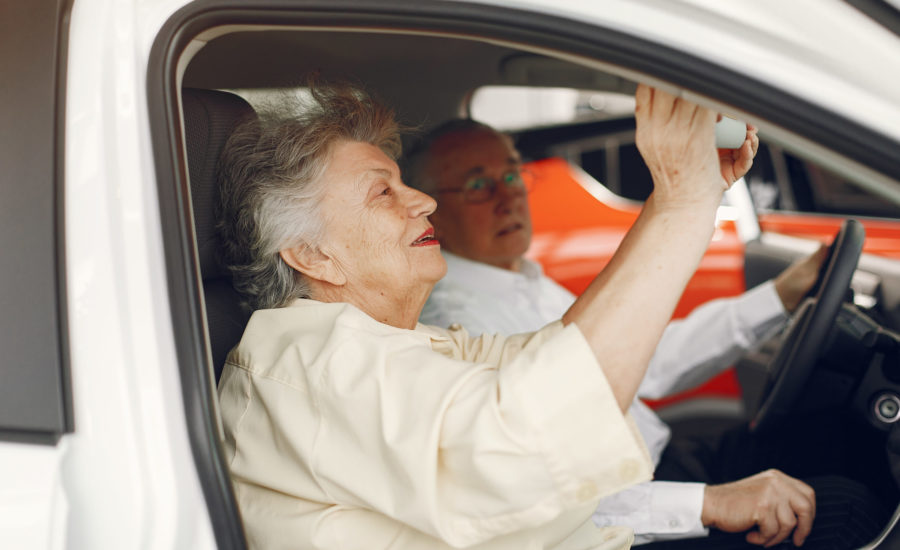The best way to return a leased vehicle during COVID-19
Because of the the risk of contracting COVID-19, Alan and his wife do not want to return their vehicle to a dealership. What options do they have?
Advertisement
Because of the the risk of contracting COVID-19, Alan and his wife do not want to return their vehicle to a dealership. What options do they have?

Q. The the lease on our 2016 Honda CR-V comes up this spring (2020). After making all the payments, we intend to purchase the CR-V at the lease residual value plus the required Ontario vehicle inspection, licensing charges and other expenses. Due to the current severe physical distancing requirements related to the spread of COVID-19 and our age (my wife and I are both over 70 years old), we are not prepared to visit a car dealership. What can you suggest we do?
–Alan
A. You are one among many thousands of Canadians returning a leased vehicle this spring. Paul Shaw, a Toyota dealer in Toronto, explained that public health restrictions related to the Coronavirus came into force right at the start of the annual peak selling season for new vehicles. Sales of new vehicles were running at a record pace when you leased your CR-V four years ago, so the number of leased vehicles returning this spring is high.
If you’re not comfortable returning a vehicle to a dealership in person, or you’re not comfortable shopping for a new vehicle with distancing rules in effect, the auto industry has developed some solutions.
If your lease is scheduled to end in spring 2020, you may not want to re-enter the auto market due to job uncertainty or reluctance to shop while physical distancing is in effect—both are very valid concerns. Most automakers have a process in place to extend the end date of a new car lease for one to three months (sometimes a bit more).
This opportunity has always existed and has usually been available when conditions beyond the control of either party delayed the delivery of the next vehicle. Situations could include a fire at the plant that assembles the vehicle, or a strike at the port of entry into Canada, or perhaps a long delay for production of an electric car. The automakers are now allowing lease extensions to permit shoppers to enter the market for their next vehicle after COVID-19 related restrictions have been relaxed. With permission, you’ll be able to continue making the same payments. The end value of the lease will continue to decline as you make additional payments; that’s of possible interest if you’re thinking about buying the vehicle when physical distancing is over. Be sure to continue automatic withdrawals for the additional lease payments.
New car dealers and finance companies are now equipped to handle the paperwork remotely, whether it is a buyout, like your situation, or a vehicle turn-in. Contact the dealer or leasing arm of the automaker before the lease is over and let them know the end of your lease is coming up and you would like to have someone pick it up. If the dealership’s sales department is closed, or they are unable to help, the finance arm of the automaker will be able to help. You may be unable to reach a live person over the phone; that’s understandable under the current circumstances, with record-high demand and customer service personnel working from their homes. If that’s the case, send an e-mail instead. The Automobile Protection Association has prepared a useful list of contact numbers and e-mail addresses.
Arrange to drop your vehicle off on the last day of your lease, at the original dealership without going inside; or take a photo of the odometer reading and write the finance arm of the automaker again to let them know where they can pick it up. In Quebec and Ontario, auto dealers have been prohibited from selling vehicles on their physical premises until mid-May, but returning a leased vehicle is technically not a retail sales transaction, and many Ontario dealers will allow you to drop it off.
The end-of-lease vehicle condition inspection can be performed without your being present. To prepare for the inspection, have the vehicle washed, take detailed images, including the wheels and tires, and any damaged areas, to ensure you won’t be charged for damage occurring after the return. Be sure to include both keys originally delivered with the vehicle. Regular tires should be inside the vehicle if you’re turning it in with winter tires. (Winter tires should normally be removed from a leased vehicle returned after the end of March, but with physical distancing in effect it’s understandable that you would not have taken care of this.) Maintain your auto insurance until the vehicle has been returned.
Share this article Share on Facebook Share on Twitter Share on Linkedin Share on Reddit Share on Email